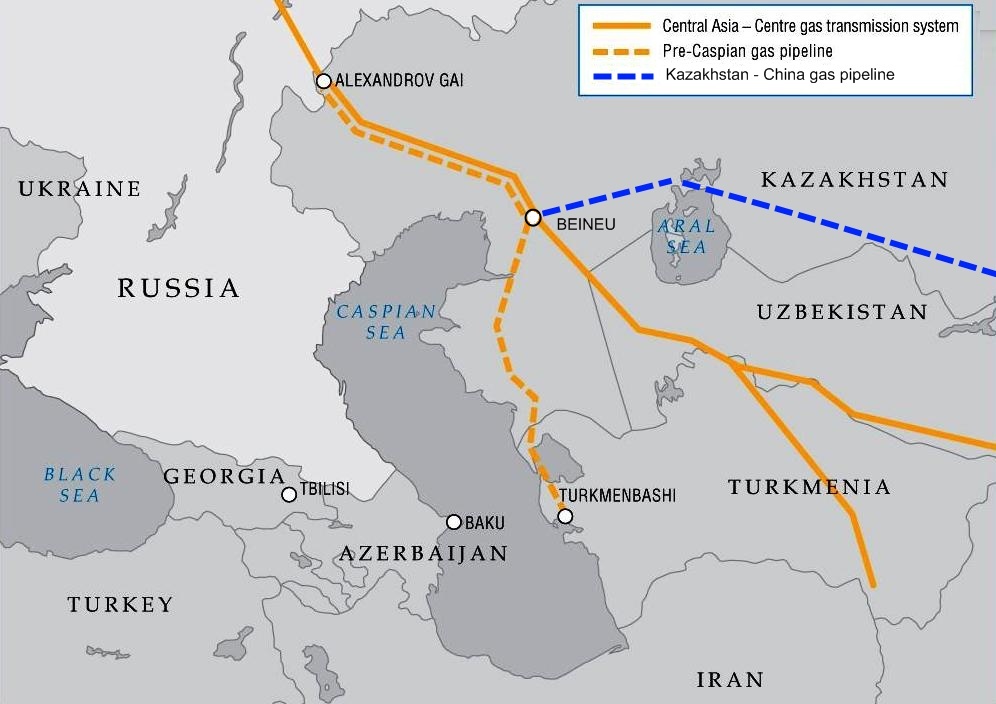|
Are the South Stream project and Caspian
Gas Pipeline abandoned? (with
additional comments of Nov-1-2008)
Export plans of Gazprom can be
fulfilled without the South Stream project. Gazprom's program of Russia's
gas sector development to 2030 forecasts the following volumes of pipeline
gas exported to Europe (including Turkey but excluding the Baltic states).
Table
1.
Gas
Exports by Pipeline, bcm
|
2015 |
2020 |
2025 |
2030 |
European countries, including Turkey
|
219-222
|
220-225 |
220-227 |
220-227 |
Source:
Program, p. 2-14.
Please note that the combined
capacity of existing export pipelines and the Nord Stream project exceeds
the forecasted export flows.
Table
2.
Capacity of European Export Routes of Gazprom
|
Gas
export route via |
Estimated capacity,
bcm/year |
|
Moderate
|
Maximum
|
Ukraine
|
124 |
142 |
Belarus
|
31
|
35 |
Blue Stream
|
16
|
16 |
|
Finland |
6 |
7 |
|
Nord
Stream |
55 |
55 |
|
Total: |
232 |
255 |
Sources: Gazprom, NAK
Naftogaz.
Despite the complicated
relations of Gazprom and Ukraine, this year the Ukrainian gas transit to
Europe will reach the record level of 123-125 bcm. Transit volumes can be
increased by another 19 bcm/year by the construction of relatively
inexpensive Bogorodchany-Uzhgorod pipeline.
It looks like the $20-billion
South
Stream project was planned for political rather than economic reasons.
Section 2.4 of the program says
that in the long term, Central Asia is most likely to supply 70 bcm/year of
gas to the pipeline system of Gazprom (see page 2-20). According to the
official gas balance, in 2007 Gazprom received 60 bcm of Central Asian gas,
including about 8 bcm from the Karachaganak gas field in Kazakhstan.
Gazprom-KazMunaiGaz
agreement foresees the future supplies of the Karachaganak gas at 16
bcm/year. So the Karachaganak gas alone is to raise the input of Central
Asian gas to 68 bcm/year. It indicates that the program does not foresee the
construction of
Caspian Gas
Pipeline. Apparently, the plan assumes just a minor upgrade of the
existing Central Asia-Center pipelines.
In general, the exclusion of the
least profitable projects of Gazprom could be good news for both investors and
importers of Russian gas. Having enough pipeline capacity in Ukraine, the
construction of the South Stream pipeline does not make sense. With the
Caspian Gas Pipeline, Gazprom has to carry substantial financial costs,
while the profits from resale of Turkmen gas are questionable. The recent
sharp increase of the cost of capital proves that Gazprom was right in its
moderate assumptions.
Mikhail Korchemkin,
managing director
October 31, 2008
Additional comments -
November 1, 2008
-
The program sends a clear signal to
Ukraine. The completion of the South Stream pipeline means a
permanent loss of revenue from the transit of 30 bcm/year of
Russian gas to Europe. This message will complicate the process
of getting permission to build the pipeline in the continental
shelf of Ukraine.
-
The program gives another proof
that Gazprom's management considers political goals of the
Kremlin more important than the profits of shareholders.

-
Gazprom may need the Caspian gas
pipeline to compensate for the off-take by the
Kazakhstan-China
pipeline or to feed the latter pipeline (map source -
website of Gazprom). In this case China's participation in
the Caspian pipeline project would be logical. The
Beineu-Alexandrov Gai section of the Caspian pipeline may not be
needed.
|